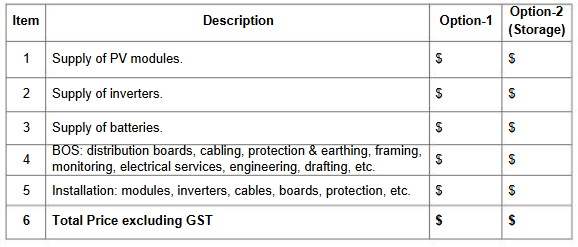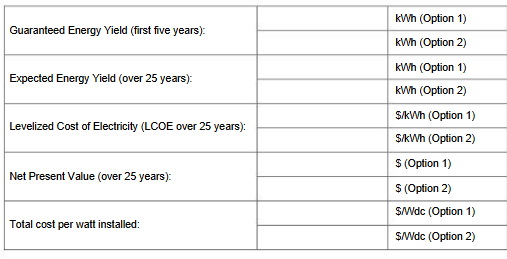SOLA4012 Commerical PV Project Individual Assignment 2025 | UNSW
| Category | Assignment | Subject | Engineering |
|---|---|---|---|
| University | University of New South Wales | Module Title | SOLA4012 Commerical PV Project |
| Submission Date | Report Must be Submitted as PDFs via Turnitin in Moodle |
| Late Penalty | As per Spree Policy (30% on due date plus 10% per day afterwards) |
| Type | Individual Assignment |
Scope Summary
You are a graduate engineer in a large engineering department of a well-known PV installer (SPREEnergy). The company has received a tender request from a large retailer for the installation of a non-exporting, grid-connected PV system for their commercial buildings around Australia, with an energy storage option. You will have to find a suitable warehouse from the retailer somewhere in Australia and produce a full system design for the tender response. Your design needs to comply with all relevant safety and performance standards, and it needs to go through a thorough techno-economic optimisation to ensure optimal financial and technical performance. A summary of the tender requirements can be found below.
Compliance and Tender Report Summary
The project incorporates a roof mounted grid-connected PV system, with no grid export (non- exporting system), that must comply with all the requirements from the Clean Energy Regulator (CER) and Solar Accreditation Australia (SAA), to be eligible for the creation of Large-scale Generation Certificates (LGCs) or Small-scale Technology Certificates (STCs) depending on the final size of the system. The layout of the PV array must be designed to:
- Maximise the system capacity (trying to achieve a minimum size of 100 kWdc),
- Maximise the annual yield within the roof space available (avoid self-shading and shading, and ensure good ventilation of the PV modules must be ensured), and
- Minimise the levelized cost of electricity.
You are fully responsible for all design matters of the system and selection of components, including the PV modules, support structures, fixings to existing roof sheeting, DC cabling from PV panels to inverters, cabling to the building distribution boards, earthing, and protections. Easy access to all PV panels is essential to allow for cleaning and maintenance, by means of clear access corridors. The panel layout also must allow for continuous access to the existing perimeter roof gutter system.
The system must be suitable for connection to the low-voltage distribution system of the building (400/230 V, 3-phase, 50Hz). The inverters are to be installed in a suitable room on the ground floor (from now on the ‘inverter room’). The proposed point of grid connection is the building’s Main switchboard (MSB), located on the ground level, next to the service area (usually close to loading docks).
The existing service riser and cable trays can be used to route the cables from the roof to the MSB. The MSB has available circuit breaker spaces for the connection of the PV system; however, the designer must size and select the circuit breakers adequately.
As this system will be installed by SPREEnergy, your design must adhere to the Design and Construction guidelines for PV systems (section E3.5) as described in this LINK.
You will receive a year of interval load data for the building:
- You must fill in any missing data with appropriate methods.
- You must scale this load data to achieve an energy intensity of 240 kWh/m2/year before using it.
- You will use this data to size your system for both design options (with and without storage).
Battery Option
The first part of the design will include PV only option. After completing the PV-only design option, you must also provide an additional design option that includes battery storage. The storage option might allow the installation of a larger PV system, as any excess energy can be used to charge the battery, but the system must not export energy to the grid. Notice that a different selection of inverters might be necessary to allow for energy flow between the building, the PV system, and the grid. The preferred battery chemistry is Lithium-ion due to the number of cycles and high DOD levels that can be achieved. You must select the size and model of the battery that provides the best economic benefit to the owner of the system. You must also estimate when a replacement battery is required. Unfortunately, SPREEnergy does not have current battery prices, so you will need to do some cost investigation for lithium-ion batteries.
The battery system installation must comply with all relevant Australian Standards (including AS/NZS 5139: 2019) and be able to supply energy to the three-phase electrical system of the building. The battery inverter/charger must comply with the same conditions as the solar inverter.
Achieve Higher Grades with SOLA4012 Assignment Solutions
Order Non-Plagiarized Assignment
Economic Assessment
SPREEnergy has asked you to produce a design that offers the lowest Levelised Cost of Electricity (LCOE) and highest Net Present Value (NPV) for each option (with and without battery storage) to win the tender. Assume a life span of 25 years for the PV system, but bear in mind that some components might need replacement over that period. The capital investment of the system is important but secondary. The electricity tariff structure for the building is shown in Table 1.

To calculate the direct costs of your system, SPREEnergy has provided you with the values presented in Table 2. The tender specifies an inflation rate of 2.4% and a real discount rate of 7%

Appendix 1 – Tender Return A: Schedule of Prices
The following schedule is to be completed and returned, and will be used in the assessment of tenders and the administration of the contract.

Appendix 2 – Tender Return B: Performance Metrics
The following schedule is to be completed and returned, and will be used in the assessment of tenders and the administration of the contract. Please list all your assumptions for your calculations.

